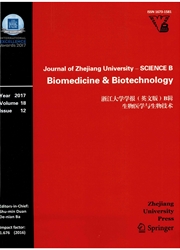

 中文摘要:
中文摘要:
在常规基因大美人解决胚胎的致命性的问题,地点特定的 recombinase (SSR ) 系统(Cre-loxP, Flp-FRT,和 C31 ) 被用于织物特定的基因大美人。与一个 SSR 系统和可诱导的基因表示系统(四圜素和 tamoxifen ) 的联合,阶段特定的大美人和转基因的表示能被完成。到 genomic 操作的这个 SSR+inducible 有条件的工具的申请能以各种各样的方法被扩大。有条件的基因指向的选择,套住例如有条件的基因的、多种用途的有条件的等位基因,和有条件的基因 silencing,被开发了。SSR 系统能也被用来与点变化和 chromosomal 畸形构造精确疾病模型。与这些令人激动的成就,当我们希望,我们向一个新时代正在移动在里面整个染色体哪个能被操作。
 英文摘要:
英文摘要:
To solve the problem of embryonic lethality in conventional gene knockouts, site-specific recombinase (SSR) systems (Cre-loxP, FIp-FRT, and φC31) have been used for tissue-specific gene knockout. With the combination of an SSR system and inducible gene expression systems (tetracycline and tamoxifen), stage-specific knockout and transgenic expression can be achieved. The application of this "SSR+inducible" conditional tool to genomic manipulation can be extended in various ways. Alternatives to conditional gene targeting, such as conditional gene trapping, multipurpose conditional alleles, and conditional gene silencing, have been developed. SSR systems can also be used to construct precise disease models with point mutations and chromosomal abnormalities. With these exciting achievements, we are moving towards a new era in which the whole genome can be manipulated as we wish.
 同期刊论文项目
同期刊论文项目
 同项目期刊论文
同项目期刊论文
 LKB1 Is Required for the Development and Maintenance of Stereocilia in Inner Ear Hair Cells in Mice.
LKB1 Is Required for the Development and Maintenance of Stereocilia in Inner Ear Hair Cells in Mice. 期刊信息
期刊信息
